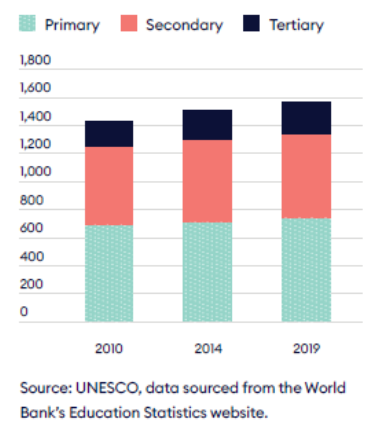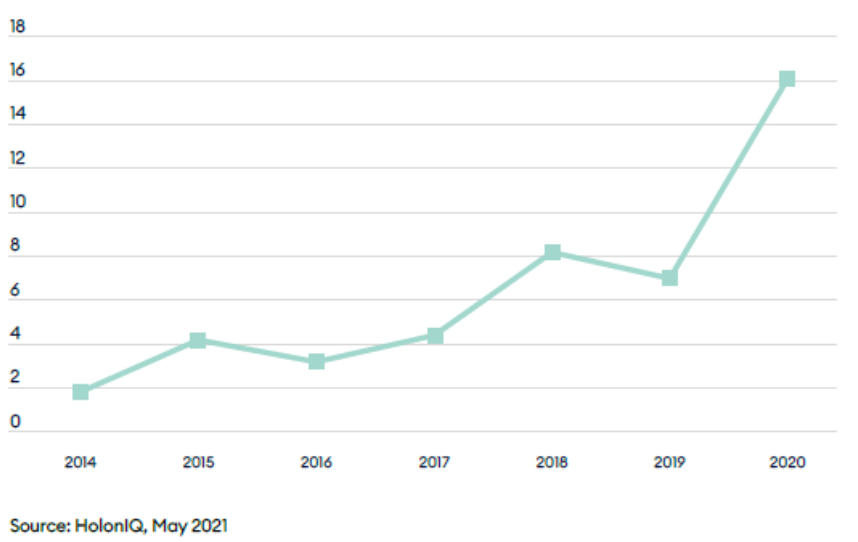The Covid-19 pandemic has posed unprecedented disruptions to education systems; however it has also accelerated many of the structural changes undergoing in the sector and opened up new opportunities. The emergence online and hybrid learning models, the take-up of Massive Online Open Courses (MOOCs) and augmented and virtual reality (AR/VR) have the potential to reshape the sector and pose serious threats to current incumbents, if investment in supporting connectivity infrastructure and training is not embraced.
The global education sector has reached an impressive scale, having grown rapidly over the previous decade, and forecasted to double in market size within the next decade. Total enrollment across all levels of education reached 829 million students in late 2019, a 14% increase from 2010. In 2019, more than 5.5 million students studied in degree programmes outside their home countries, more than double the number doing so in 2000. The global education market is projected to continue expanding rapidly and more than double in size, reaching US$2.4trn by 2027, up from US$1.1trn in 2019.1
Growing student population: Global student enrollment, 2010-2019 (million students) growth rates

The pandemic has accelerated the digital imperative, a likely irreversible change, that is forcing education providers to rethink their strategies. Although most students have returned to classrooms since the height of the pandemic, educational institutions can now be certain that blended or digital-only modes of learning are part of their future. Established high education providers can no longer afford to put off investment in the digital future, as growing competition from new entrants in the market intensifies. The strongest challenges are posed by online-only providers of MOOCs (Massive Online Open Courses). This segment has seen rapid growth in 2020, increasing its international base of registered learners by 50%, and reaching 180 million users (excluding China).2 US-based MOOC Coursera has led the charge, adding 30 million new users in 2020 and attracting substantial new funding to increase its expansion. There is growing expectations that MOOCs, as they refine their models, will have a larger impact on the sector in the years to come.
Global spending on education technology is also showing signs of expansion. Total spending worldwide in 2020 was US$227bn, accounting for 3.6% of total expenditure on education and training. Spending is expected to grow rapidly in the coming years, reaching US$404bn in 2025.3 Advanced technologies that enable immersive and multi-sensory learning methods, such as augmented and virtual reality (AR/VR), are expected to grow fastest to around US$13bn globally, while AI and robotics spend is expected to reach US$9bn.4 Investors follow the suit, as the EdTech segments attracted over US$16bn venture capital (VC) investment in 2020, up from just US$1.8bn in 2014.
EdTech boom: Global Venture Capital (VC) investment in EdTech, 2015-2020 (US$bn)

There are however significant structural challenges that remain in place that may hinder the growth EdTech. The lack of high-quality broadband infrastructure needed to support more advanced forms of learning, coupled with teachers’ lack of readiness to embrace digital forms of learning are some of the biggest limits to the growth in the sector. Governments and telecom companies have a major role to play in upgrading the current broadband infrastructure, guaranteeing faster levels of connectivity and increasing digital skills training. There are further concerns towards data security and the need to ensure adequate data privacy practices by EdTech firms.








